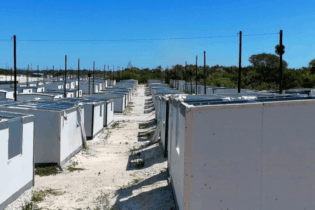South Africa’s public-private partnership (PPP) model for renewable energy is showing the potential of attracting R100 billion in investments, said David Humphrey, the global head of power and infrastructure at Standard Bank.
Humphrey said the way the bidding process for South Africa’s multi billion-rand renewable energy programme was being implemented was providing convincing evidence that PPPs could effectively be established as a means to close the country’s infrastructure deficit. He said that Standard Bank estimates that more than R100 billion of capital has been raised in the first two bidding rounds of the government’s renewable energy programme and that the estimates are based on feedback from the Department of Energy. “Funds actually committed are the ultimate test of a programme and we believe the amount put on the table so far is a clear indication that adopting principles of PPPs attracts global investment,” said Humphrey. “The use of PPPs in the financing, design, building and operation of infrastructure has emerged as one of the most important models employed by governments around the world to close the infrastructure gap.” He noted that South Africa still has many opportunities to extend the use of the PPP model to keep infrastructure development moving. “The power sector is undergoing an important transition, with a number of sector reforms primarily driven by the need to attract private investment into new generation capacity,” he said. “Eskom generates 95% of the country’s electricity. So the government’s programme is therefore following a hybrid model, where independent power producers sell what they generate to Eskom.” In addition, Humphrey said the renewable energy programme was one of the areas in which core principles of PPPs, particularly those relating to risk allocation, were being used successfully.He said the programme has attracted the interest of several local and international financiers and independent power producers, with the bidding process to build a number of wind, water and solar energy projects being oversubscribed.
Ntlai Mosiah, specialist in infrastructure development, noted that numerous lessons from the PPP programme have been incorporated into the Renewable Energy Independent Power Producer Programme, which was one of the largest project finance undertakings in South Africa to date. “These lessons include a realistic assessment of the depth of South Africa’s debt and equity capital markets, a risk allocation matrix acceptable to the government and lenders, and provisions for black economic empowerment,” Mosiah said. However, Humphrey said that of particular interest was the compulsory inclusion of communities as equity participants in each participating bid, funded by local development finance institutions. “The inclusion of the Development Bank of Southern Africa in the tender specification documents made it easier for investors to identify potential funding sources for local communities and entrepreneurs. “Strong participation from the Industrial Development Corporation and recent activity by the Public Investment Corporation also greatly assisted lenders and investors,” he said. He believed that the government went out of its way early to appoint the best advisors based on an enabling environment that had been agreed with all stakeholders, including a critical role for the independent energy regulator, Nersa. Source: the new age






